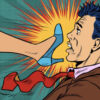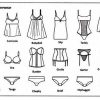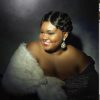The lighting in a photo is the most important of all. It’s true also that the team is there for everything else, hair styling and make-up, styling and so on, since this is a team job. But let’s speak today about lighting.
The identity of the photo comes with the lighting, the photo can be simple or indeed sophisticated, natural or dramatic, it all depends on the orientation that we give it.
Light helps also quite well to highlight the face; it can erase any imperfections and give your skin either a warm glow or cold stare should we desire it.
The use of shadow can give more character to the image, whereas light without shadow can be soft, be careful not to make things look too bland and commercial. There are several professional brands of lighting designed to better sculpt the perfect image.
2 types of lighting, HMI halogens, which used to be used in the era of beautiful black-and-white portraits, are of a cinema style. The HMIs are still used indeed in the cinema today.
And of course the more classical electronic flashes; one can do almost anything with flashes. I personally have used BOWENS from the very beginning, though I have tried some nice alternative brands; every photographer must find his own brand that suits them.
I’ve chosen BOWENS because it’s just so logical and simple to use, there are a tonne of accessories which you can adapt to each situation, their modern, and above all I’ve never had a single technical problem in more than 15 years, and believe me, they have taken a few knocks.
In all cases, daylight isn’t enough to create a beautiful, sophisticated light setting. I find it a little boring, and for those who only use the light coming from the windows, it’s quite limited, and then when it’s grey outside, what do you do? But my greatest pleasure is to recreate light settings from total darkness. It’s like a painting; you have the complete freedom to adapt the light to each of your models.
At the same time, my light settings, they’re the signature of my technique. In general you need several light sources to obtain a sophisticated result. First we need a light on the face, the most important one, the main one. This can be done with a beauty dish, more or less soft, so that you can control the contrast of each shot. All that remains is to set this up about 3 or 4 meters away if you’re trying to get some shadow, or on other hand to have it just 1 or 2 meters away to have a fuller lighting effect.
A lighting umbrella is used pretty much everywhere; it makes the shadows less rigid.
A lighting box will give you a very soft lighting effect, although it’s important to make sure that it doesn’t become a ‘sad’ image, by placing your light source so that it also gives off some soft shadows. You can make sure that the photo doesn’t have this ‘sad’ quality without shadows; the lighting just has to be face on.
If you like the light from dishes but find the shadows too rigid, then a small white reflector can help solve your problems.
Then you can embellish the features of the photo to taste, a little light on the hair from the side for example. The same goes for lighting from below, which we can achieve with a dish and honeycomb tool. Finally, we can also create a halo of light, where we move the source backwards or forwards to make the halo bigger or smaller as the case may be.
It can also be necessary to reposition the model herself to properly separate out the light on the model and the light that’s coming from below.
Then, we can add lights to achieve exactly what we want. For example, for the face we can have a long lighting box, which will give the effect of light coming in from the sides, like from a window.
We can also add a light higher up on the hair. For ladies who have slightly more rounded faces, a black sheet can help to really define your features.
We can play with a light that comes from behind, and which surrounds the model; a little like the light that comes from a car that may be following you at night.
Don’t forget either that with a shutter we can control the light intensity, or even the flash. In fact BOWENS have radio-controlled commands for that.
Don’t let yourself get swamped by assistants who want to take control and do whatever they want, it’s for you to decide what lighting effects you want, and not for your assistant. They’re just there to help you get the exact effects that you want, to carry the lights from one spot to another, in short to make life easy for you, not the other way around. It’s you who have the vision of what you want done, or of what your client might want. So enjoy yourself, play with the lighting and get a really clear idea of exactly what you want.







